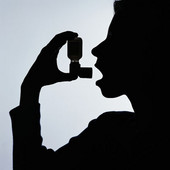
THURSDAY, Feb. 23 (HealthDay News) — A home-visit program for children with asthma reduced hospitalizations and emergency department visits, improved patient outcomes and saved $1.46 for every dollar spent, according to a new study.
Researchers examined the impact of the Community Asthma Initiative, a community-based asthma care program for low-income families, developed and implemented in 2005 by a team at Children’s Hospital Boston.
The program includes nurse case management and care coordination combined with home visits by a nurse or community health worker to educate families about asthma, assess the home for asthma triggers, and provide materials and services to reduce asthma attacks, such as HEPA vacuums (which have high-efficiency air filters), special bedding covers and pest control.
The study included 283 families with children who had been hospitalized or who had made emergency department visits for asthma. Of those children, 43 percent had moderate or severe asthma. Over one year, the families received an average of 1.2 home visits.
After one year, the researchers saw a 68 percent decrease in asthma-related emergency department visits; an 85 percent drop in asthma-related hospitalizations; a 43 percent reduction in the percentage of children who had to limit physical activity on any day; a 41 percent decrease in reports of missed school days; and a 50 percent fall in parents having to miss work to care for their child.
The percentage of children with an up-to-date asthma care plan rose from 53 percent to 82 percent.
These improvements were evident within six months and persisted for as long as two years, the study authors noted in a Children’s Hospital Boston news release.
The program cost $2,529 per child but yielded savings of $3,827 per child due to fewer hospitalizations and emergency department visits. That means that $1.46 in health care costs was saved for every dollar spent on the program.
“This is a remarkable savings to society and reflects better health outcomes for the children,” program team co-leader Dr. Elizabeth Woods, of the division of adolescent/young adult medicine, said in the news release.
The study, published online Feb. 20 in Pediatrics, appears in the March print issue of the journal.
More information
The American Lung Association has more about children and asthma.

